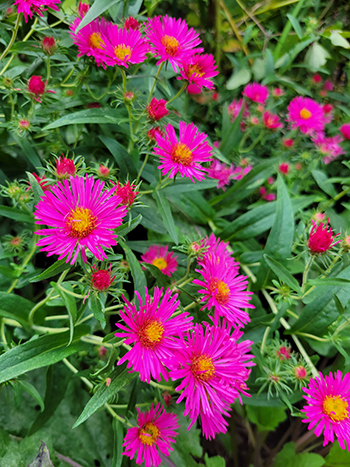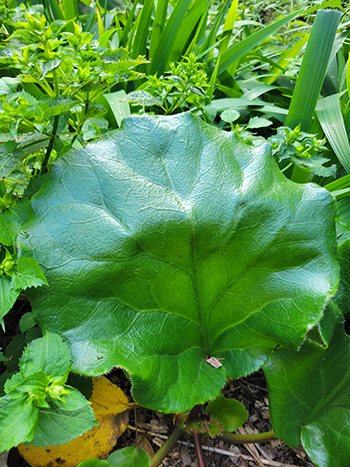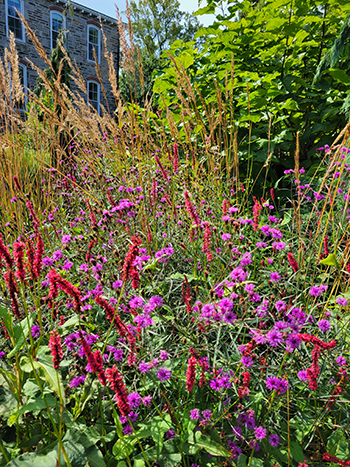
Plants of the Week: September 25

Symphyotrichum novae-angliae ‘Andenken an Alma Pötschke’ (New England aster)
While not all of us may be able to pronounce this cultivar (smoothly, at least), we can all appreciate the vibrancy of the blooms that Symphyotrichum novae-angliae ‘Andenken an Alma Pötschke’ has to offer. At first, I didn’t know this selection was a New England aster since it is a departure from the typical lilac colored flowers of the straight species, instead putting on a show of intense magenta. This feels like a fitting last hurrah to summer, creating the perfect foil to the nearby browning grasses and lingering seed heads. Experience this vibrant color in the Scott Entrance Garden. Photo credit: W. Lapp

Bergenia pacumbis ‘Green Monstah’ (Chinese bergenia)
When we want to add texture to the garden, our response is often to utilize plants with deeply serrated leaves, grasses, or even those with needle-like foliage, but the opposite is just as important. Adding plants with large smooth leaves, like this Bergenia, is visually balancing. As the cultivar name implies, this bergenia is truly a monster! The large waxy leaves can grow up to a foot in length and appear to have a certain crispness to them. The succulent quality of the leaves pair well with the sturdy foliage of nearby iris and adds a calmness, contrasting with the other textures found in the John W. Nason Garden. Photo credit: W. Lapp

Vernonia angustifolia ‘Plum Peachy’ (tall ironweed)
Yes, yes, I’m sure you are aware by now that texture is equally, if not more important than color in the garden, but I still can’t help but talk about it! Texturally, this Vernonia angustifolia ‘Plum Peachy’ is the complete counterpart to Bergenia. With narrow, whorled leaves that grow along the whole stem, the foliage of tall ironweed is reminiscent of Amsonia hubrichtii (Arkansas blue star). Its lacy form lends itself well to being closely planted with other perennials; it softens the boundaries of where one plant starts and the other ends. Here in the John W. Nason Garden, it melds wonderfully with the interplanted Persicaria amplexicaulis (mountain fleece) and Sorghastrum nutans (Indian grass). Photo credit: W. Lapp





No Comments